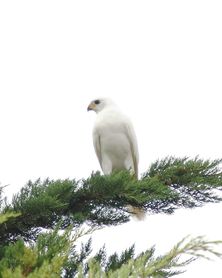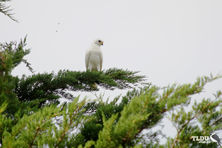
Shoppers Feedback:
Jan 17, 2017
Hello Ros,
I have now paid the invoice, but I would like to write to you just to say a big THANK YOU for getting me the Penguin!
The ChatterMate Penguin became a nice memory for me when I was in New Zealand, and I am so greatful to you for arranging so that I could have it! :-)
Thank you so much!!!!!!!!!!!
Regards,
Malin
Hi Ros,
Many thanks for your very kind email. I really appreciate your prompt reply!
I appreciate your advice regarding the decorations and customs. These are a gift for my daughter’s exchange student family so when she returns home on the weekend I will show her and see if she loves them as much as I do!
Thanks so very much again - I am truly grateful for your kind assistance.
Kind Regards
Bernadette
Ros,
Thanks again for the great customer service. It's a refreshing change!
Best regards,
Trevor
Hey Roz,
Thank you for your emails. Just loved my first order. The cute little Aussie bush critters are going to be used for an office Christmas decoration. My colleagues also liked them and talked about making an order to your site. I'll send you a photo when completed.
I'll be ordering more to send to my daughter's host family in America.
Fabulous service from you.
Kind regards,
Michelle
Thankyou. Order arrived today. One very happy grandson with his new beastly binoculars.
Regards,
Irene
- Home
- Wild Wonders
- Shop
- Aromas of Australia
- Australian Made
- Books
- Book Marks
- Christmas Decoration Sale
- Christmas Decorations
- Clocks
- Drink Holders
- Garden & Outdoor
- Gift Wrapping & Cards
- Home & Giftware
- Jewellery
- Keyrings
- New Products
- Pencils & Pen Holders
- Photo Frames
- Plush Toys
- Plush with Sound
- Sheepskin Rugs
- Stationery
- Stone Carvings
- Toys & Games
- Travel Goods
- Wedding
- Wild Figurines
- Wildlife Safety Products
- Wind Chimes
- Wine Charms
- View All Products
- Wildlife
- Australiana
- Explore
- Contact Us

Quick Facts
| Length: | 46 cm |
| Height: | - |
| Weight: | 545 grams |
| Colour: | - |
| Habitat: | Found in most forest types, especially tall closed forests including rainforests |
| Food: | Birds, small mammals, reptiles and insects |
| Predators: | - |
| Status: | Endangered in TAS. Secure in all other states and territories |
The Grey Goshawk is a medium-sized raptor (bird of prey), with two colour morphs (forms). The grey morph has a grey head and upperparts, with white underparts barred grey on the chest. The rounded wings are grey above, white below, and have darker wingtips. The medium length tail is grey above and white below, barred grey. The white morph is pure white all over and is often known as the White Goshawk. Both morphs have a dark red eye and yellow legs and feet. However, this species is so variable in colour and size that it can be known as the Variable Goshawk.
The Grey Goshawk is similar in colour to the Grey Falcon which has pointed, dark-tipped wings and a different shape when flying; however, this falcon has quite a different range and habitat preferences (arid zone) to the Grey Goshawk. The lighter northern form of the Brown Goshawk could possibly be mistaken for a Grey Goshawk at a distance, but it is less thick-set, with a rounder tail and more distinct brown colour and chest markings, and the two species prefer different habitats.
The Grey Goshawk is found in coastal areas in northern and eastern Australia. The white morph is predominant in the more open forests of north-western Australia and coastal Victoria and is the only form found in Tasmania. The grey morph is more common in the thicker, sub-tropical forests of the east coast.
The white form of the Grey Goshawk is the only pure white raptor in the world.
The Grey Goshawk is found in most forest types, especially tall closed forests, including rainforests.
Sedentary; young birds wander in search of new territories.
Grey Goshawks feed on birds, small mammals, reptiles and insects, capturing prey by striking with their long, powerful clawed toes. It pursues its prey in flight, striking at speed, and even chases prey into dense undergrowth. It will also use ambush and surprise to catch birds, included the introduced Common Starling. The larger females can take larger prey than males.
Grey Goshawks form permanent pairs that defend a home territory year round. Both sexes constructs a stick nest lined with leaves high in a tree fork, and often re-use the same nest. The grey and white colour morphs interbreed freely, and this species has (very rarely) interbred with Brown Goshawks. While the female does most of the incubation, the male relieves her when she needs to feed, and catches most of the food for the young, which the female tears up for them to eat.
Grey Goshawks, are listed as endangered species in Tasmania, with their nesting habitat affected by logging.
Last Updated: Thursday 9th January, 2014
BirdLife Australia - www.birdlife.org.au
BUSH e-TELEGRAPH
Signup for our monthly newsletter the "e-Telegraph"
Quick Links
Home | The Beginning | About The Land Down Under | Wild Wonders | Advertise on Wild Wonders | Christmas Decoration Sale | Christmas Tree Decorations | Drink Holders | Plush with Sound | Stone Carvings | Wildlife Wine Charms | Freebies | Australian Wildlife | Help Our Wildlife | Australiana | Photo of the Month | Explore The Land Down Under | Contact Us | Legal Notices


